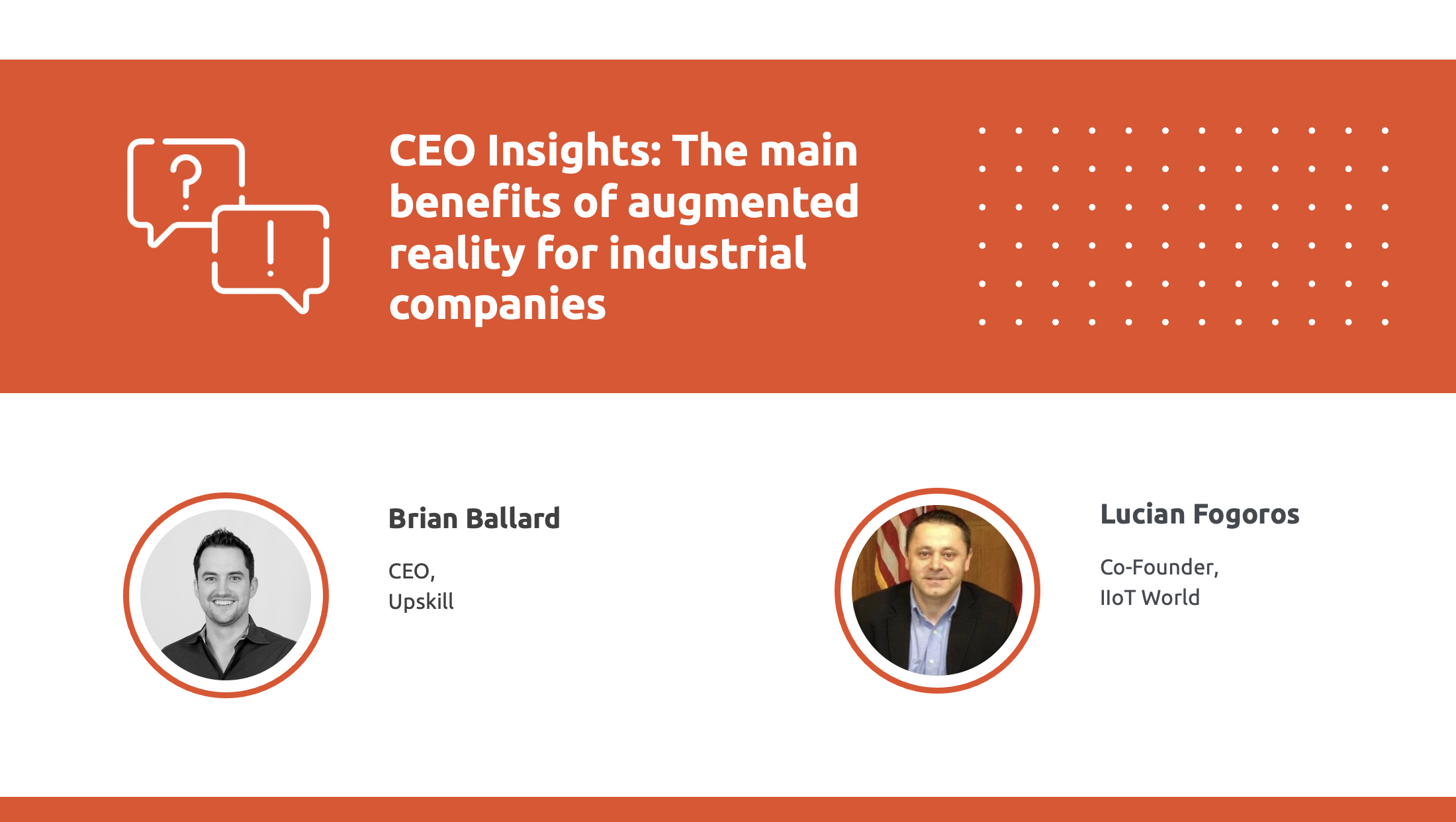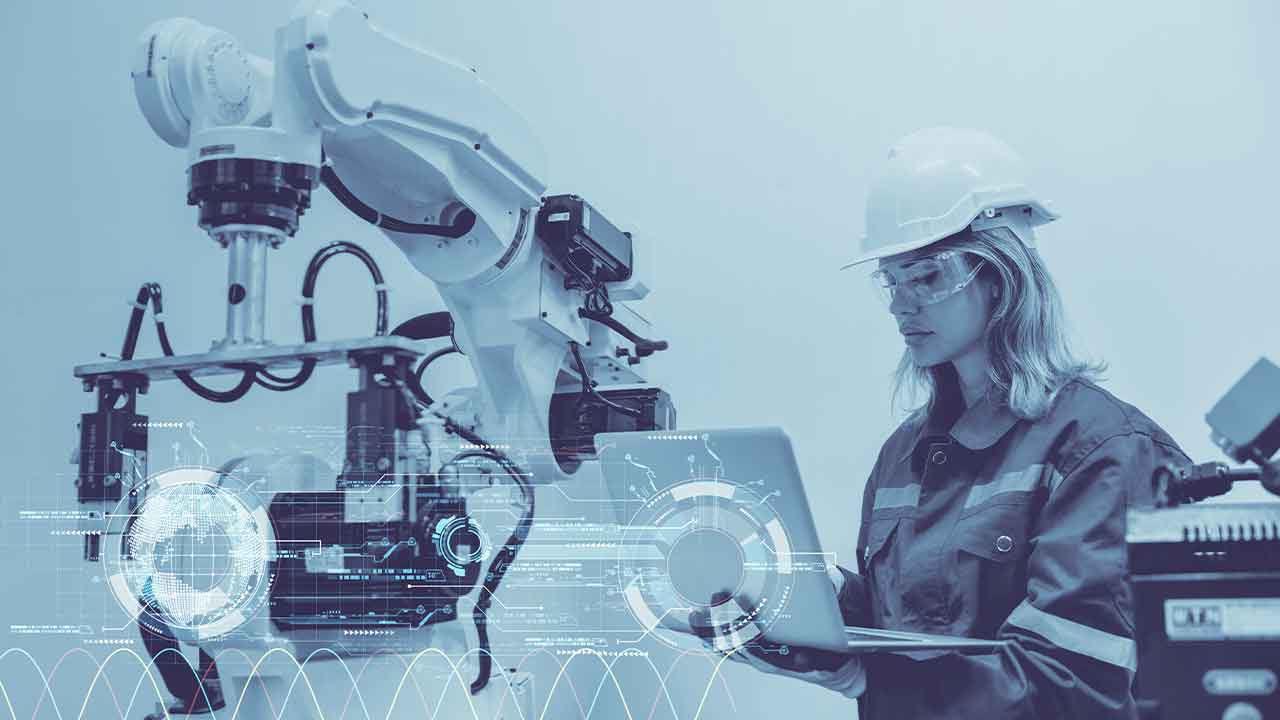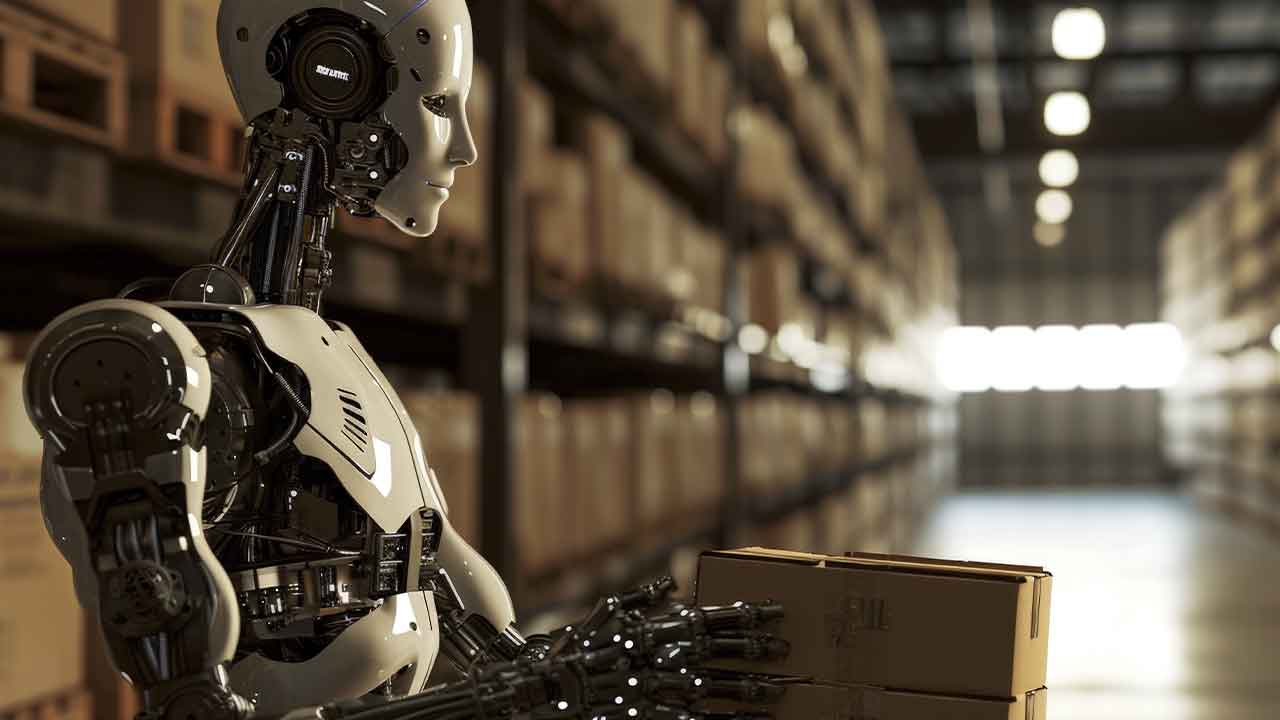CEO Insights: The main benefits of augmented reality for industrial companies
Industrial players have begun to explore the benefits augmented reality (AR) can offer, a trend that has nowhere to go but up. AR aims to deliver higher productivity, quality, and accountability, quickly identifying the problems and keeping all the services and processes going. Brian Ballard, CEO of Upskill, explains how AR brings value for industrial companies and what are the main struggle working in AR at this moment.
Lucian Fogoros: What are the main benefits for industrial companies to incorporate augmented reality?
Brian Ballard: For most industrial companies, they would consider their greatest asset to be their people. Augmented reality (AR) benefits companies by empowering their hands-on, front line workers. augmented reality achieves this by facilitating on-the-job training and cross-training to enable companies to extract more value out of their workforce, and also by bridging the skills gap and addressing challenges around an aging workforce.
Our augmented reality technology also empowers large industrial companies to further participate in the digital economy. Previously using paper work instructions or burdensome mobile workstations, companies can now use AR on smart glasses to visualize text, diagrams, and checklists in technicians’ line of sight so they can remain hands-free to complete tasks. Our technology at Boeing, for example, has driven a 25-percent improvement in production time and reduced the wiring assembly error rate from 3 percent to virtually zero.
Lucian Fogoros: What kind of problems do your solutions/products solve in a factory?
Brian Ballard: We create software that increases the skills of hands-on workers and delivers higher productivity, quality and accountability. Using our industrial AR software platform on smart glasses, workers can look up product schematics, step through complex workflows, engage experts or supervisors from wherever they are in the factory or thousands of miles away, monitor data from nearby equipment, and record their best-practices for documentation or share with colleagues. Equipped with this real-time information, workers with no prior experience completing a complex task can quickly approach the performance of veterans, working faster with fewer errors. This increases the value each worker adds to the business without disrupting their routine or requiring burdensome training. In return, increased employee productivity lessen the incentive to outsource jobs, and creates an opportunity for higher wages and employment security.
Lucian Fogoros: What is your biggest struggle working in AR at this moment?
Brian Ballard: We’ve created a technology solution that has to cross the proverbial chasm in an area – the industrial workforce – that has been otherwise underserved by technology. To continue moving forward, we must work to bring the IT and operational technology leaders together in our customer base and clearly demonstrate the ROI. It’s definitely a challenge we can overcome, but one that takes a lot of commitment and new thinking. We know that the opportunity within the industrial sector is massive and each new win helps accelerate the market and makes our efforts that much more rewarding.
Lucian Fogoros: How hard is to convince traditional industrial players to adopt augmented reality?
Brian Ballard: When you are early in a market, everyone is looking for early adopters to take the leap and be the initial testers who can prove out whether or not augmented reality can truly impact the business. The good news is that our engagements are already showing an average performance improvement of 32 percent with efficiency as one of the key metrics. This is just one important KPI among many. Companies such as Boeing have reduced error rates from 3 percent to zero. KPN, a telecom company, realized an 11-percent cost reduction while vastly improving staff utilization; and GE saw material performance improvements as high as a 46-percent improvement in worker productivity and other important benefits including increased compliance, higher first-time quality and so on. GE’s former VP of Manufacturing Industries even commented, “In just three to five years, I can’t imagine a person on the plant floor that doesn’t have a wearable device to help them do the job.” It’s stories like these from well-recognized industry leaders that are paving the way for AR to become mainstream.
Lucian Fogoros: From your perspective, what is the key to accelerate AR Market Growth in the industrial sector in the upcoming years?
Brian Ballard: We think the key to accelerate is enterprise awareness around having solutions that span the entire value chain, from point solutions, such as EyeSight, to more holistic platforms like Skylight. A lot of the companies that have experimented with different point solutions are starting to evolve their line of thinking to say, “This works great. Okay, what’s next?” We’re looking at an era where point solution providers will need to understand how their solutions will scale across businesses to impact the greatest number of people in the organization, and to that end, we feel well positioned.
Find out more about Augmented Reality in IoT from an interview with Ian Kanski, CTO of UrsaLeo.



